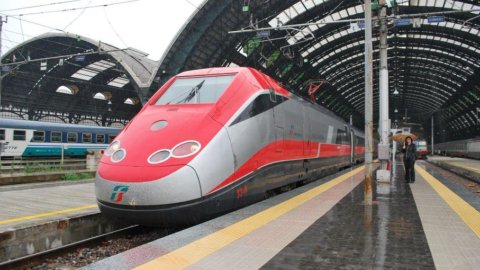The construction of the Turin-Milan-Naples high-speed railway will determine a net benefit for the community of no less than 2,7 billion euros during the first 50 years of life. This benefit derives above all from the valorisation of the time saved by the over 20 million passengers/year.
Added to this are the positive economic and social repercussions estimated at around 19 billion euros on the economies of the territories where the railway junctions are located. In this case, the main benefits derive from the increase in tourist flows for a value of approximately 11 billion euros in the period in question.
These and others are the results of the study conducted by the Observatory on “The Costs of Not Doing” directed by prof. Andrea Gilardoni (President of the Observatory and professor at Bocconi University).
These results will be presented on July 12 in Philadelphia on the occasion of the 8th World Congress on High Speed Rail, the most important world event on high-speed rail. The main results are as follows:
– The construction of the Turin-Milan-Naples HS will generate, in the first 50 years of its use, significant benefits for the community quantifiable at 2,7 billion euros. The main items are: decrease in accidents induced on roads/motorways, reduction of greenhouse gases, saving of time and travel costs. This is largely due to the modal elevation shift from car/aircraft to rail.
– In the same period considered, the new line will also generate 18,7 billion euros of economic and social repercussions on the territories where the same persists (this value is certainly prudent). The benefits, partly of a redistributive nature and partly additional, derive from the valorisation of the greater flows of tourists, students, business, as well as from the increase in real estate values in the areas hosting the high-speed stations.
– Stand out i benefits of the Milan-Rome section which, more than any other, has redesigned citizens' travel habits: 2,1 billion euros of net benefits for the community and around 9 billion euros of economic and social repercussions.
– Also for this section the most significant benefits are constituted by the valorisation of the time saved, by the lower transport costs and by the reduced accident rate deriving from the reduction of the use of road trips. These savings are calculated against the use of car, plane and train on conventional rail lines.
"More than two years after the full launch of the Turin-Milan-Naples HS, a series of economic, social and environmental impacts emerge on the country that are certainly significant even if not always easy to read and easily measurable" - declares the prof. Andrea Gilardoni president of the Observatory "The Costs of Not Doing".
"The study, rather than closing a debate, opens it with a series of analyzes and reflections. From the research it emerges – continues Gilardoni – how the work produces consistent Benefits of Having Done which fall both punctually on the cities-railway junctions that it touches and diffusely on the country. These benefits are developed over half a century: the high-speed lines undoubtedly represent one of the long-term investments that our grandchildren will also enjoy the most.”
Gilardoni adds: “The analysis of the Turin-Naples high-speed line in general, and of the Milan-Rome in particular, highlights how the infrastructure – thanks to the greater speed and reliability of the service – reduces physical-geographical distances, creates more large reference markets and facilitates communications and connections: this has numerous impacts on the economic and social development of the country".
"Practically, the modernization of the railway system has also led to a significant modal shift in the transport sector.” concludes Gilardoni “Today we are witnessing an ever more frequent use of the train compared to air and road, at least on the Milan-Rome-Naples route. Furthermore, a "new mobility" is emerging, ie new travelers attracted by the convenience in terms of times, costs and comfort associated with the use of the AV. The changes in travel habits, and not only, of large categories of citizens (workers, students, tourists, etc.) are therefore notable”.





